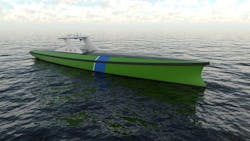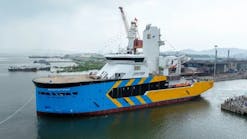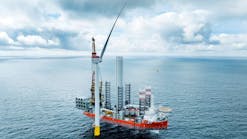Offshore staff
HOOFDDORP, the Netherlands – A consortium of maritime companies has unveiled the concept design of an autonomous guard vessel (AGV).
C-Job Naval Architects, in collaboration with LISA Community, SeaZip Offshore Service, Sea Machines, MARIN, and eL-Tec Elektrotechnologie, created a modern design that will support the offshore industry by exploiting technology available today.
The design is smaller and lighter than most current guard vessels used to protect offshore operations and boasts sustainable solutions as well as exploiting the benefits of autonomous shipping. In addition, the AGV is set to operate more efficiently as well as require lower operating costs due to no crew being required.
The AGV is specifically designed for surveillance of offshore structures throughout their life cycle, ranging from wind farms to substation platforms and cable routes. It can continuously monitor nearby marine traffic visually as well as via radar and AIS data. With any vessel that approaches the area, measures will be taken to secure the area in order to avoid collisions and damage to the offshore infrastructure.
An intruding vessel can be communicated with and will receive information on how to safely navigate the area as well as being physically escorted away from the site by the vessel. Additionally, the encounter will be recorded to provide video footage in case of any violation or accident.
Since a crew is not required onboard accommodations can be eliminated in the design, meaning the ship will be considerably smaller than existing guard vessels. The smaller size creates a number of opportunities, such as using batteries thanks to reduced propulsion requirements. Additionally, the reduced power and lack of onboard crew leads to lower operational costs.
The vessel will recharge its batteries via a charging station that can be moored independently or connected to existing equipment onsite. Depending on the situation, charging could either be via a cable connection to the on-site equipment such as an offshore transformer platform or locally generated using renewable fuels.
While the consortium continues to work on the design, they have considered human intervention for the unmanned vessel. If human intervention would be required, will be connected to a command center which could control the AGV remotely to ensure correct action is taken.
07/07/2020





